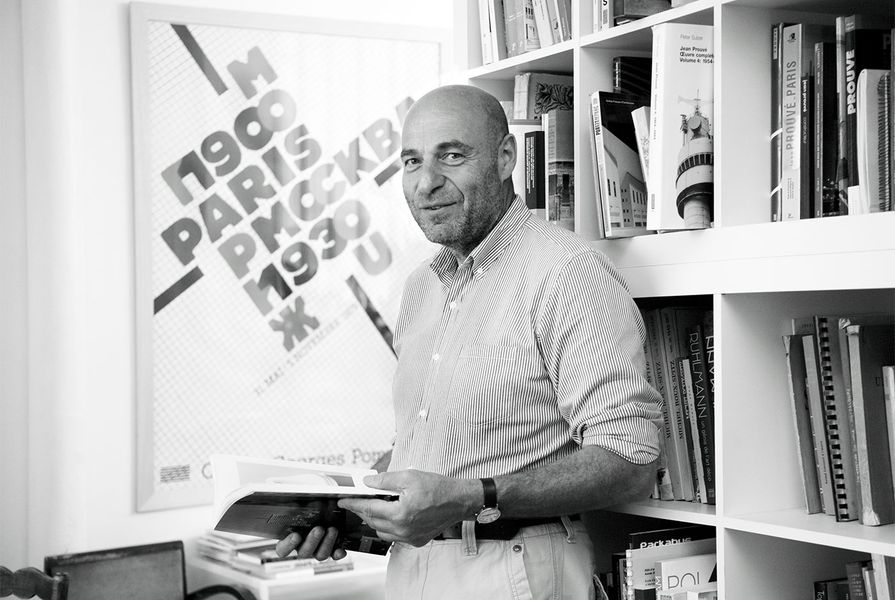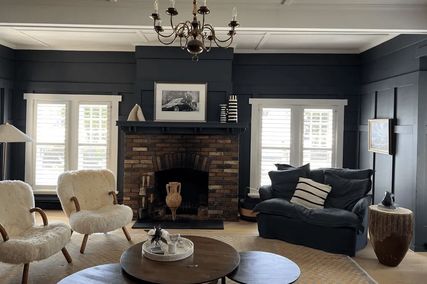Jean-Louis Cohen, architectural polymath, died suddenly at age 74 on 7 August. His links to Australia were renewed in 2022 when Penelope Seidler and the University of Sydney appointed him as the inaugural Penelope Visiting Professor in Architectural History. He delivered a public lecture for the university in the Utzon Room at the Sydney Opera House in September 2022 on the city as an accumulation of exchanges mediated by architecture through history. He had previously lectured in Australia in 2017.
Cohen was prolific in numerous fields. He was a university professor, a guest lecturer, an exhibition curator and a researcher. He was the subject of many interviews and the author of journal articles and books. So many books – always on modernism, but with a much broader base and reach than others. Books on Paris. Books on Le Corbusier (his favourite subject), including original research on Le Corbusier’s Russian projects. Books on other French architects, from Tony Garnier (1984) and Yves Lion (2001) to modern master Mies van der Rohe (1995) and contemporary stars Frank Gehry (2001) and Alvaro Siza (2006). His epic global survey of modernism – The Future of Architecture Since 1889 (2012) –stands besides those of Kenneth Frampton, Manfredo Tafuri and William Curtis as a touchstone on the trajectory of modern architecture and city-making.
Cohen advocated for architectural and urban culture across many cities, particularly Paris. He created a detailed plan for the museum, research and exhibition centre Cité de l’Architecture et du Patrimoine, a version of which opened in 2007 in the Palais de Chaillot, Place du Trocadéro. He subsequently curated several of the centre’s exhibitions. With Bruno Fortier, he also curated Paris, the City and its Projects (1988), the first exhibition at the Pavillion de l’Arsenal. Whereas the Cité de l’Architecture et du Patrimoine communicates French urban history, the Pavillion de l’Arsenal displays recent urban culture in Paris and its faubourgs. Cohen’s enthusiasm for urban and architectural culture extended from specialist subjects to topics of public interest.
Growing up in the intellectual milieu of the 1960s, Cohen studied under leading designer Jean Prouvé and philosophers Henri Lefebvre and Michel Foucault. He spoke English, Italian, Russian and German as well as French, and spent time living in Italy, Russia and Germany. Absorbing the currents of Italian urban theory inhabited by Aldo Rossi and Manfredo Tafuri, and influenced by Hubert Damisch and Rob Krier, he taught urban form and composition at universities in Nantes and Paris, and applied these theories to projects in the Parisian suburbs. His agitation for further architectural research in universities assisted the introduction of masters’ courses in French institutions. He held the International Chair at the prestigious College de France from 2013 to 2021. Following these academic pursuits in his country of origin, he taught in the United States at Harvard and Columbia universities and the Getty Research Institute. He was the Sheldon H. Solow Professor of Architectural History at the New York City University Institute of Fine Arts from 1993 until his passing.
Cohen’s work returns again and again to urban and architectural culture as a series of exchanges between places over time. His study of Russian constructivism led to his curation of the Paris–Moscou 1900–1930 exhibition (1979) at the Centre Georges Pompidou, and his book Scenes of the World to Come: European Architecture and the American Challenge 1893–1960 (1995). He revealed Rome as a fruitful source of inspiration for many architects, including Le Corbusier in his introduction to the 2007 edition of Toward an Architecture,and Tony Garnier in Tony Garnier, from Rome to Lyons (1984). With his then-wife Monique Eleb, he traced colonial influences in North African cities in Casablanca: Colonial Myths and Architectural Ventures (2003). In the Penelope Lecture at the Sydney Opera House in 2022, he referred to “transurbanity and the migration of forms” and his associated article “Frottage City,” with its title a playful response to Colin Rowe and Fred Koetter’s Collage City (1978).
We first met Jean-Louis while undertaking postgraduate urban architecture studies in Paris in the 1980s. Russell attended his lectures on USA and USSR cultural exchanges at École des Hautes Études en Sciences Sociales when Jean-Louis was preparing his PhD. On a student trip to Frankfurt, Darmstadt and Karlsruhe to study the work of Ernst May, Joseph Olbrich and enlightenment city-planning, Jean-Louis shared his encyclopaedic knowledge of architectural and urban culture with warmth and enthusiasm.
Philip studied at École Nationale Supérieure d’Architecture de Paris-Belleville, where Jean-Louis’s dense lectures concentrated on modern precepts of planning, drawing on French, German, English and colonial attempts to redefine city-making based on more objective, metropolitan-scale methods. A highlight of the course was undoubtably the week spent in Berlin. Ensconced with the microphone at the front of the bus, Jean-Louis situated each building we passed within his rich, deep and affectionate knowledge of modernism.
With Cohen’s passing, Kenneth Frampton lamented on Instagram: “Jean-Louis was not only a brilliant, encyclopaedic scholar of the last century, but also a generous and loyal colleague. In addition, he was, throughout his life, a charismatic and inspiring teacher. He was also an incredibly talented curator of didactic exhibitions, among which the most recent is the current exhibition he co-curated in Porto of the career of the late Brazilian architect Paulo Mendes da Rocha. Jean-Louis was the cosmopolitan core of critical architectural culture throughout the world. I miss him terribly.”
So shall we all.
















